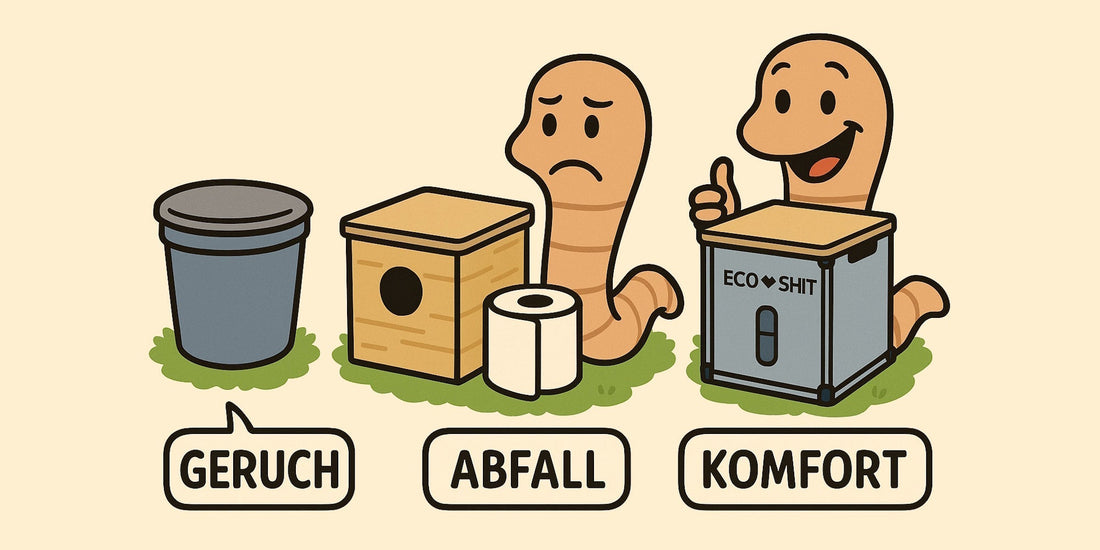
Dry toilet, pit toilet or separating toilet – what is what?
Water, sewage, and flushing aren't available everywhere. And that's exactly where it comes in: the dry toilet . But what exactly is it? And why is the composting toilet the best version?
What is a dry toilet (TC)?
“TC” stands for “ Toilet sèche ” – French for dry toilet.
Unlike the traditional toilet ("water closet"), the TC requires no water or sewer connection . It operates entirely without flushing.
In this sense, a bucket with a toilet seat is also a dry toilet. Or the good old outhouse . But these simplest versions also come with a few disadvantages:
❌ Urine and feces end up together in the bucket
❌ This quickly creates a strong smell
❌ The waste volume is large (urine = 90% water!)
❌ Disposal is often time-consuming and unpleasant
The solution: composting toilet = smart dry toilet
The composting toilet is a more advanced version of the dry toilet . It separates liquid and solid components—and that's exactly what makes the difference.
Advantages of the composting toilet over the pit toilet:
✅ Low odor – because feces and urine remain separate
✅ Easy disposal – urine can be flushed into the drain or onto the hedge
✅ Less volume – because the feces dry faster
✅ Nutrient recovery – urine is suitable (diluted) as liquid fertilizer
✅ Compostable – feces + bedding on the compost (depending on setup)
Conclusion: The composting toilet is the new standard
Whether in the garden, in a tiny house, on a construction site or when camping – wherever a toilet does not work , the composting toilet is the better dry toilet .
It is cleaner, more sustainable and significantly more comfortable than the classic outhouse.
Less smell, less waste, more control!
